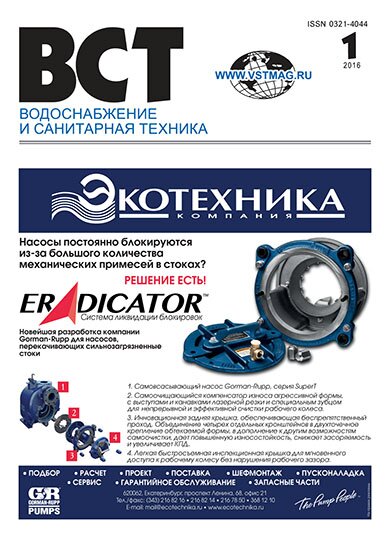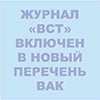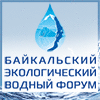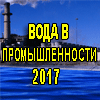|

Number 1 / 2016
To download all number in format PDF (in Russian)The further text is accessible on a paid subscription.
For authorisation enter the login/password.
Or subscribe
Number maintenance (pdf) (doc)
Number abstract (doc)
Literature lists to articles (doc)
|
bbk 000000
UDC 628.161.3
Alekseev S. E., Alekseeva L. P., Kourova L. V.
Evaluation of the efficiency of different chemicals in removing iron and organics from underground water
Summary
The composition and quality of underground waters in different regions of Russia substantially differ. Most underground waters contain elevated iron concentrations. Iron from underground water that contains oxygen and high concentrations of organic substances (humic and fulvic acids) that cause the water color is most difficult to remove. Besides, in oil producing regions underground waters occur that contain pollutants of anthropogenic origin: oil products, phenols, amines etc. In the process of such water purification integrated methods shall be used to provide for eliminating organic and non-organic pollution. The results of the studies of removing iron complex organic compounds from underground water in the Nefteyugansk region by different chemical methods: oxidation, alkalization and coagulation are considered. The impact of the conditions of using chemicals on the underground water purification efficiency was determined. It was shown that in removing complex iron compounds from water strong oxidizing agents and alkalizing chemicals could be used. To eliminate humic substances and organic compounds of anthropogenic origin coagulating chemicals must be used.
Key words
ozonization , deferrization , ground water , chromaticity , iron , coagulation , permanganate oxidizability , organic substances
|
bbk 000000
UDC 628.166.085
Volkov S. V., Parilov P. S., Tkachev A. A.
UV-disinfection in drinking water treatment as a key element of protection from water-borne infection
Summary
Various aspects of using different disinfection methods in drinking water treatment are considered. A short list of the most common water pathogens and their basic properties in relation to the use of disinfection with different chlorine-containing chemicals is presented. The necessity of using combined disinfection methods because of the insufficient efficiency of chlorination in relation to some chlorine resistant forms of microorganisms and protozoa is indicated. The international experience of introducing comprehensive schemes of chemical and chemical-free disinfection is considered; the domestic experience in this area is shown. By the example of assessing the morbidity rate of St. Petersburg and Nizhny Novgorod population the efficiency of combining traditional chlorination and other chemical methods of water treatment with subsequent UV-disinfection has been analyzed. It was found that combining several disinfection methods (as a rule, chlorination or chlorammoniation with UV-irradiation) provides for the significant decrease of infectious hepatitis and enteroviral infection case rate. The use of UV-disinfection in combination with other chemical methods provides for solving the problem of chlorination byproducts generation and at the same time ensuring a reliable barrier against chlorine resistant water borne pathogens. In addition the sanitation and epidemiologic safety of the population are significantly improved which is of primary importance in big cities with water sources being under high human-induced impact.
Key words
water intake , efficiency of well operation , well frameless slotted filter , hydrodynamic and hydraulic evaluation , filter permeability
Read more ...
|
bbk 000000
УДК 628.112.2
ALEKSEEV V. S., Martintsov S. M.
On regulatory identification of well filter design
Summary
The present day regulatory framework of design and construction of underground water intakes does not regulate the methods of drilling and equipping wells with filters provided the wells are operating for a significantly long period (depreciation) of 15–20 years regardless of the composition of abstracted water and water-bearing strata. Under the circumstances the problem of maintaining the continuity of the traditional (from the Soviet period) multiple-times approbated recommendations focused on the long-term operation of the water intakes with minimization of the water abstraction and supply to the users becomes timely. As a basis of this approach the use of filter prototypes – analogues manufactured in Russia on commercial scale that predeterminedly ensures the efficient well operation is suggested. The performances of well frameless slotted filter, the analogue of Johnson filter (USA) and (by a number of parameters) of carcass-framed and spiral-wire filters, recommended for use in SNiP 2.04.02-84 are considered. Manufacturing well frameless slotted filter on commercial scale with the use of high-tech equipment ensures the precision size of the slot, required structural integrity and rigidity that allow eliminating wire shift during transportation and erection of the filter in the well. Hydrodynamic and hydraulic evaluation of the well frameless slotted filter was carried out. The data of the comprehensive evaluation of filter resistance is presented with account of internal head losses, corrosion and suffosion resistance, chemical and biological mudding parameters of wells equipped with frameless slotted filters as well as of maintainability.
Key words
Read more ...
|
bbk 000000
UDC 628.16.067.3
Filatov A. I.
The analysis of washing rapid filters with different drainage types
Summary
The analysis of the process of washing rapid filters using head losses diagrams is presented. The diagrams of layer-by-layer head losses during washing allow determining and showing graphically the true capability of one or another drainage system to provide for uniform filter washing in area. The presence in the diagram of gaps in head loss values or even zones with a negative angular coefficient is a main evidence of the fact that the used drainage system cannot ensure uniform distribution of wash water in area. It is shown that uniform filter wash is possible on condition that the head loss diagram has a positive angular coefficient.
Key words
rapid filter , wash uniformity in area , head loss diagram , drainage layer , filtering media
Read more ...
|
bbk 000000
UDC 628.3:504.05
Lerner А. D., Inchagov А. D.
Regulation of wastewater discharges within the framework
of the national environmental policy
Summary
The interrelation of the environmental legal relations in the field of regulating pollution discharges into the water bodies and public utilities operation is considered. Regulation of wastewater discharges and environmental payments for the negative impact on the water bodies are directly interconnected. Above-limit payment for discharges is one of the factors of the bankruptcy of water and wastewater utilities. Amendments to the system of regulating the negative impact on the water bodies introduced in 2015 could neither solve the existing problems nor eliminate the contradictions between the interests of the institutions of the RF Ministry of Natural Resources and Environmental Protection, water and wastewater utilities and national fiscal interests. According to the current methods of regulation drafting technically unachievable requirements to the effluent discharges are set to the water and wastewater utilities; and failure to observe them is subject to substantial financial responsibility. Shifting a part of the financial responsibility from water and wastewater utilities to business did not improve the economic performances of water and wastewater services but placed additional financial burden on business. No changes in discharge regulations that were envisaged in Federal Law No. 73-FZ of June 3rd, 2006 «On the enactment of the Water Code of the Russian Federation» occurred due to the lack of the regulatory and legal framework expected from the institutions of the RF Ministry of Natural Resources and Environmental Protection. The amendments to the environmental regulations introduced into the legal framework do not correlate with each other and reflect the interests of different institutions. It is evidence of the absence of the national environmental policy. The constituted statutory regulations must correspond to the provisions of the national environmental policy, solve the tasks set by the policy, eliminate the emerging contradictions. The basic principles that must make the foundation of the national environmental policy are presented. The main principles are the balance of the public interests, environmental interests, the interests of water and wastewater utilities and business, all-level budgets, technically achievable requirements to the negative impact and the priority of environmental protection over the national fiscal interests.
Key words
standard of allowable discharge , best available techniques , ecological safety , environmental payment , discharge into the public sewer , above-limit payments for discharges , implementation of environmental protection measures
Read more ...
|
bbk 000000
UDC 628.16:66.013.51
Pupyrev E. I.
Pre-project analysis of drinking water treatment facilities
Summary
The method of pre-project analysis of constructing efficient water treatment facilities is suggested that provides for predicting their parameters with account of the advanced water treatment technologies and equipment as well as the advanced design and construction technologies. On the basis of the technical specifications and selected process flow scheme the relative modification of the earlier designed version is carried out. Then the design engineer can calculate approximate quantitative characteristics of the future facilities (budget value, footprint area, electrical rating) in a relatively short span of time. For every parameter in the process flow scheme the objects are chosen (buildings and facilities) that determine the basic value of the given parameter. With the use of the system analysis method the dependence of the variation of the parameters of the facilities from the capacity was determined. Thus, in general at close values of the process and hydraulic characteristics of the facilities being designed and the designed version the specific area and specific design capacity of the process flows will be slightly increasing with the increase of the plant capacity; and for the preliminary calculations they can be considered as constant. The unit cost of the facilities is described with logarithmic relationships; and knowing the unit cost of the reference unit the cost of constructing the water treatment unit being designed can be calculated.
Key words
pre-project analysis , drinking water treatment facilities , parameters of the facilities , specific area , specific design capacity , unit cost of the facilities
Read more ...
|
bbk 000000
UDC 628.221
Vereshchagina L. M., SHVETSOV V. N.
Explanation of separate provisions of the Recommendations for designing the systems of the surface runoff from residential areas and industrial sites collection, disposal and treatment
Summary
Guidelines and regulations for designing the systems of surface runoff (rainfall, snow-melt, street washwater) from residential areas and industrial sites disposal and treatment are presented as well as the comments to the provisions of Code of Practice 32.13330.2012 «Sewerage. Public Utilities» and «Recommendations for designing the systems of collection, removal and treatment of the surface runoff from residential areas, industrial sites; and determining the conditions for its discharge into the water bodies» («NII VODGEO» OJSC). The above-noted documents permit disposal for treatment of the most polluted part of the surface runoff in the amount of more than 70% of the annual runoff from residential areas and industrial sites similar to them in pollution level, and the total runoff from industrial sites with the territories that could be polluted with specific substances with toxic properties or significant concentrations of organics. The common practice of designing engineering structures of separate and combined sewers that allow short-term discharges of part of runoff into water bodies through separating chambers (storm-overflow sewers) at heavy (storm) rains of rare occurrence is considered. The cases are considered related to the refusal of the territorial directorates of State expert assessment department and Russian Federal Fisheries Agency to allow activities in relation to the capital construction projects under design pursuant to article 60 of the RF Water Code that prohibits discharging wastewater without sanitary treatment and decontamination into water bodies.
Key words
treatment facilities , water disposal system , surface runoff , regulatory and guidance documents , limit-exceeding discharge
Read more ...
|
bbk 000000
UDC 628.17.001.4
Sirota M. N.
On the use of the liquid-phase oxidation technology in Russia
Read more ...
|
bbk 000000
УДК
КНС без приемного резервуара – миф или реальность?
Аннотация
Канализационные насосные станции (КНС) строятся там, где невозможна транспортировка сточных вод самотеком, или в случаях, когда необходимо увеличить скорость потока для предотвращения заиливания. Обычно КНС представляет собой большой заглубленный резервуар или емкость, внутри которого размещаются насосы, арматура и другое технологическое оборудование.
Read more ...
|
|











